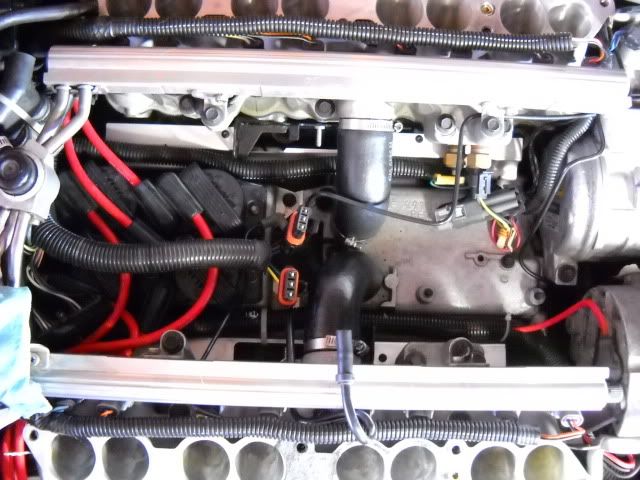Quote:
Originally Posted by 32valvZ

So what exactly would be a good reason to do this if everything is working properly?  |
Reliability, simplicity, and more air flow!
After alcohol-sensitive injectors, or injectors in general, it would be my observation that issues with the secondary control system is the second (if not the first) issue related to LT5 reliability - a WAAAAY over engineered solution to a "problem" that might have been overcome (and was on the GEN-II LT5) another way.
For example:
- There are 4 separate signal lines from the ECM controlling 4 separate relays each controlling (yet) a second pair of injectors; 24 connections in all, not counting the relays themselves.**
- There is the vacuum pump that initially charges the system and maintains vacuum as the secondaries are opened and closed (in spirited driving).
- Then there is the check valve and (old) rubber connections, plastic lines, the reservoir, solenoid, and let's not forget that the actuators should to be balanced to work in unison.
In my case, I concluded that
the air flow disruption was a consideration in the quest for HP,
throttle response is improved w/o all the stuff that needs to be actuated, espcially when all injectors are working all the time - no lag,
and since all the vacuum "stuff" could be eliminated and removed along with all the stumbling, and high idle, crap that goes along with something failing in the vacuum secondary system
the KISS principal.
So, except for a NCRS car, my question was why keep all that nonsense and the potential for complicating the troubleshooting aspect of maintaining the LT5?
The one item left to be eliminated (by me) is electrical. It stems from the way chip I have installed operates. The engine now depends on all injectors to be running - each injector sharing the load demand. If for any reason, and there are several, that the ECM should turn off the secondary injectors, some serious leaning would result and one would have to "limp home" until the problem was corrected.
So, the solution would be the equivalent of latching the secondary relays closed all the time or connecting the primary and secondary injectors in parallel - so they work as "one". The jury is still out on this - but I think Marc H agrees it may remove some potential for harm should some or all of the secondary injectors suddenly quit.
All that said, I couldn't find a reason NOT to remove the secondary actuation system. Of the 6 of us sitting at the table last week, I believe only one of us still was using the stock secondary system. The rest had removed all of the hardware, or tie-wrapped them open. As to how we liked running w/o the system, it was unanimous that we did prefer NOT having the secondary system installed.
Looks tell the story: Simple is a good thing!

FWIW,
P.